Asuncion, the capital city of Paraguay, is one of those places few travelers visit. It’s somewhat risky for female tourists since muggings are common. Two guys on a motorcycle drive up past you. Then the one sitting at the back will take a knife and slash off your handbag, while they drive off into the sunset. Moreover, this city is not as easy to reach as Buenos Aires, Montevideo or Rio de Janeiro. In any case, there isn’t that much to see there, to be honest. It’s more a place for the hardcore backpacker. Someone who would take a six-hour bus-ride from Iguazu Falls, or a long distance 24-hour bus from Buenos Aires. Also, flights to Asuncion aren’t cheap.
Then, there’s the Yerba Mate tourist, and for this type of traveler Asuncion is like heaven. Although, the only variant of yerba mate you’ll find here is Terere, the ice cold mate.
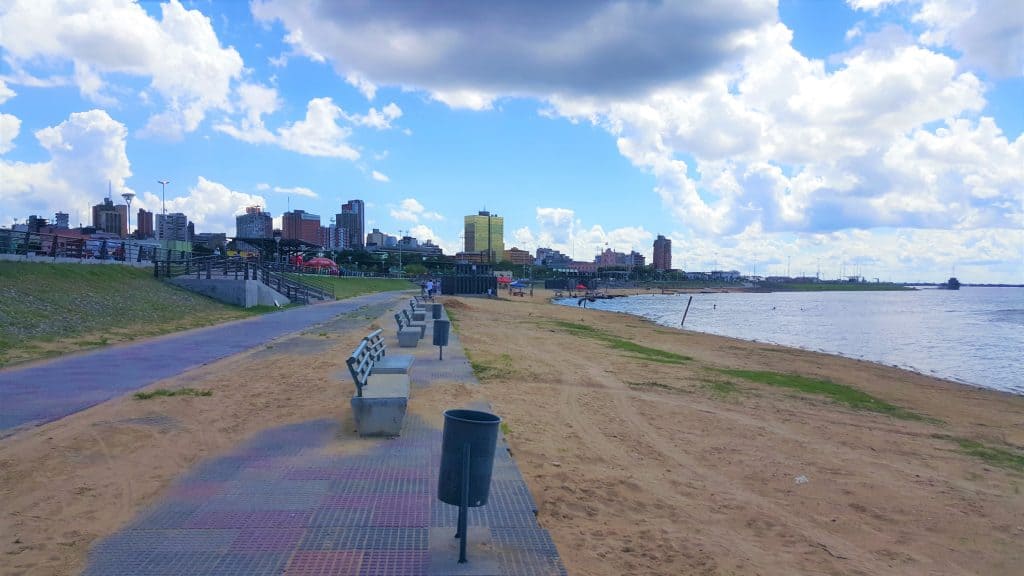
Contents
What to eat in Asuncion?
Paraguay is not a vegan heaven. In its capital city, you won’t find any vegan restaurants nor health shops. Don’t bother using Happycow, the vegetarian restaurant app. The few restaurants listed there were permanently closed at the time I visited and the app was outdated. You should try the South Korean all-you-can-eat “Restaurante Seul” (in Chile street) for healthier vegetarian options such as Kimchi. This was the most memorable dinner I had during my four days in Asuncion. Moreover, the top floor of Shopping Mall Excelsior had one or two decent food options, including a healthy “pay-by-weight” meal. In addition, there was a good supermarket on the bottom floor of this mall.
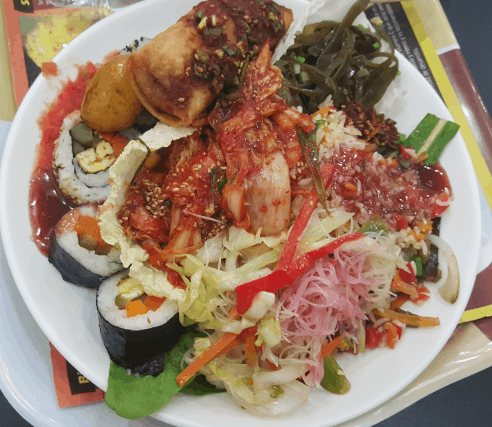
However, the main health attraction in Asuncion is the Terere (and not the food), which we’ll discuss in the next paragraph.
Terere – Paraguayan drink of choice
In Paraguay it’s too warm for Yerba Mate. Thus the same herbs are served with ice cold water instead. As with hot Mate, the water is kept in a thermal flask, but in this case to keep it ice cold instead of warm. Similar to Yerba Mate, Terere is drunk with a bombilla metal straw (although wooden straws are also available). Although you can use a normal Mate Gourd for Terere, it is more common to see a “glass-shaped” leather gourd in Asuncion. The wooden gourds are also worth checking out.
Popular brands of Terere include Pajarito, Kurupi, Selecta and Indega. Different flavors are available, e.g. Ilex Paraguensis (the yerba mate / Terere leaf) mixed with 5% peppermint, or Lemon Verbena. Some types of Terere contain artificial flavors, e.g. orange or grapefruit. This is obviously less healthy than the naturally flavored Terere. This cold tea is never sweetened. The taste is perfect as it is, you either like it or you don’t. The only terere I didn’t like was sweetened with Stevia. I ended up donating this one to the hostel free-food cupboard. The El Nomada Hostel will serve you a freshly prepared Terere for a small price if you’re not yet accustomed to making your own tea. But after learning how to prepare your own, it’ll become much more interesting.
Different Herbs For Different Tastes
There are at least twenty different herbs for sale at the supermarket to add to your tea. For example, you could add herbs for digestion, mental clarity, relaxation, or detoxification. If you don’t want to mix your own Terere, Pajarito has good natural variants. This includes Lemon/Mint, Mint and Verbena, as well as an Organic version. In central Asuncion, there are vendor stalls selling freshly prepared Terere mixed with fresh natural herbs. You choose which herbs you’d like to be added.
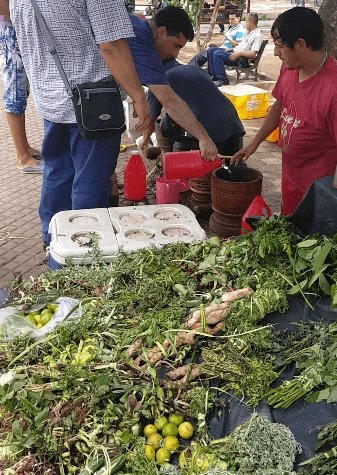
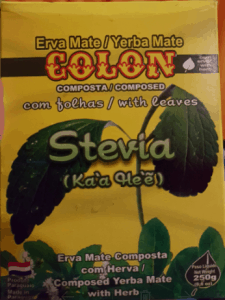
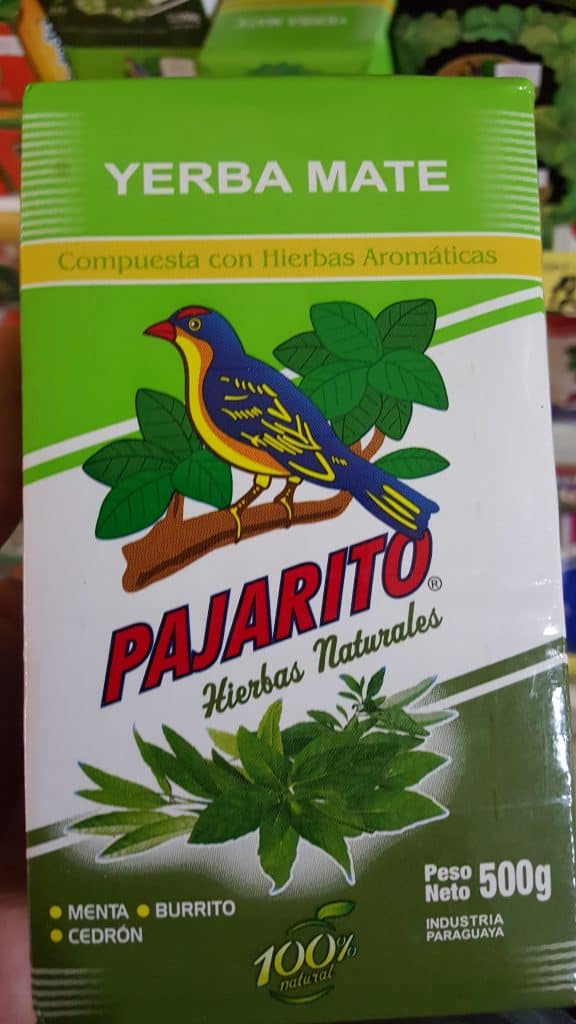
How to “spice up” your Terere
Apart from the most common Terere herb: Mint (both peppermint and spearmint), other compatible herbs sold at supermarkets include these below.
Boldo
Boldo is one of the most popular yerba mate herbs. It is often blended with mint, in e.g. Kurupi’s Menta y Boldo Terere. Boldo doesn’t have much of a taste by itself. It’s added mostly for claimed/alleged health benefits, e.g. benefitting the liver and digestive system. The amount of Boldo you ingest from drinking tea isn’t likely to have a negative effect on you, unless you have certain pre-existing health conditions (ironically such as liver disease). However, in large doses e.g. through eating the leaves instead of making a tea, this herb can lead to coma or death.
Tilo
Tilo is another popular herb often used in yerba mate infusions. Some of the health benefits claimed are its ability to calm the nerves, detoxify the body and prevent chronic diseases. However, there aren’t that much scientific research available to back this up.
Catuaba
Catuaba’s main use is as an aphrodisiac. Plus, it shows promise in promoting brain and nervous system health.
Siempre Vive
Siempre Vive (Leaf of Life) has numerous potential health benefits such as helping with asthma, bronchial problems, insect bites due to anti-histamine properties. Along with being anti-bacterial and anti-viral.
Other Terere Herbs
Sen (or Senna) has a laxative effect. Horsetail boosts your immune system. It’s beneficial to your hair (thanks to high “silica” content) and thus is sometimes used in Shampoos. Apparently, it’s also beneficial to brain health and skin problems (e.g. rashes). Jate’i Ka’a seems to be primarily for improving digestive health. Borraja (Borage in English) has been used especially for respiratory system disorders e.g. dry cough, and skin problems such as acne and eczema. Amba’y (Cecropia Adenopus) is used as an expectorant and may also help with asthma. Lastly, Moringa leaves are widely available and contain plenty of anti-oxidants, vitamins, and minerals.
Although these herbs are largely safe for short-term use (unless there are special circumstances such as pregnancy, or potential counter-interactions with other medications) – it’s recommended to check with a medical doctor with regards to long-term use.
The Finer Nuances of Terere
Experiment with the finer nuances of Terere drinking by adding fruits to your Mate gourd, such as sliced lemon, orange, pineapple, ginger or grapefruit. A popular option is to freeze a hollowed-out pineapple, then once it’s hard, use it as a mate gourd (or glass). Add the yerba mate and serve it with ice cold water. If you don’t freeze the empty pineapple, chances are the water will leak through it. Freezing solidifies it as a “glass” or container, along with keeping your drink cold.
You’ll find plenty of yerba mate innovation in Asuncion, such as these plastic “gourds”. Add the yerba mate in the top white container, and water in the bottom red plastic bottle. Then, as you sip on the metal straw the water is infused by the yerba mate. Most people would definitely still prefer a normal Mate gourd though.

You can have one of these large thermal flasks name-branded for yourself in central Asuncion. Not easy taking it all the way back home though.
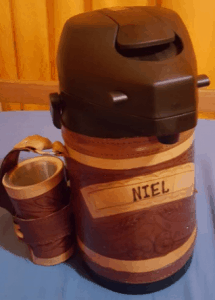
Working out in Asuncion
The gym in Asuncion is filled with Terere Junkies. Not a bad drink to accompany your workout in this humid, warm city. Simply walking outside in the summer, you’ll break a sweat. Lifting some weights with a cheap day-pass of about 3 or 4 dollars is a bonus. You can try Gimnasio Top Gym at Iturbe Street 691.
The Health Travel Junkie Asuncion Challenge
This is an obvious challenge. You don’t leave this city unless you tried Terere.
Health Travel Junkie Scale
Fitness activities – 8.5
Food – 6.5
Cost of traveling – 8.5
Other Wellness-related activities – 8.5 (Terere)
Overall rating: 80%
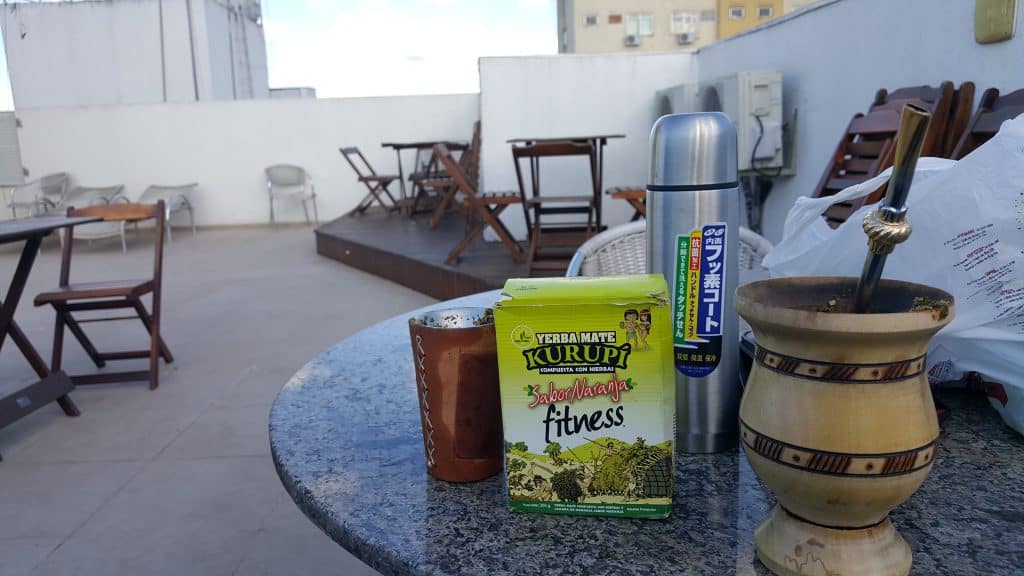
If you enjoyed this post, share the link and/or comment below!

